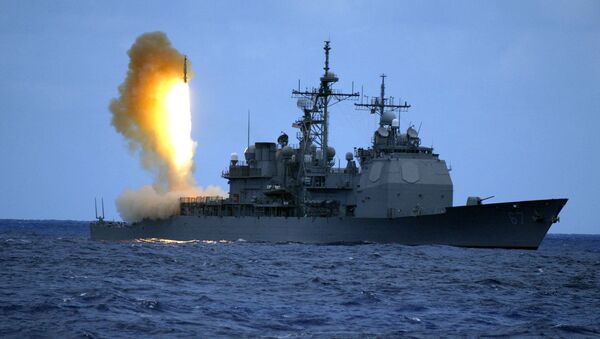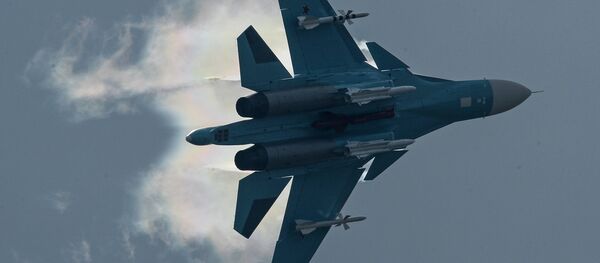Historically, smaller naval ships have been used to escort larger vessels, such as aircraft carriers. This strategy presents a united front, and is easy for enemy forces to spot and target.
For potential future global conflicts, the US Navy has adjusted its strategy. Known as "distributed lethality" the Pentagon hopes to use smaller warships in a more scattered array. Dispersing across a wider area, smaller naval vessels could focus long-range missile attacks on a single target without that target being sure where the next attack will come from.
This kind of tactic requires advanced electronic communications capabilities. When covering such large distances, all ships within the fleet would need to have instant data-sharing capabilities, as well as with intelligence satellites and targeting aircraft.
The Pentagon is concerned that networking systems are highly vulnerable. One swift electronic attack could leave the entire fleet offline and adrift.
"It’s a huge priority," US Representative Randy Forbes, House seapower subcommittee chairman, told Breaking Defense. "It’s not just the Pentagon that’s concerned about losing our advantage [in electronic warfare].
"If you talk to some of the top CEOs at some of our most defense contractors, they would take it a step further and say we’ve lost our advantage and now we’re playing catch-up."
Existing networks could be susceptible to jamming, anti-radiation homing weapons, and even wireless hacking.
"Absolutely we have gaps," Vice Admiral Tom Rowden, commander of naval surface forces, said during the Surface Navy Association conference.
The Navy is considering a number of methods to ensure the safety of its ships. One option is the "low to no power" concept, which would force vessels to operate at reduced power to make it more difficult to detect electronic output.
Others stress that the Navy needs to install redundant networks, rather than relying on a single system, as well as local area networks, that can be designed to be more difficult to penetrate.
"We’re not talking about a network that reaches all the way back to the CONUS [continental United States]," said Mark Gunzinger, senior fellow with the Center for Strategic and Budgetary Assessments, according to Breaking Defense.
"We’re talking about local area networks that are very LPI/LPD [low probability of interception/low probability of detection]. That network can be very difficult for an enemy to break."
Other world powers, including Russia and China, have advanced their electronic warfare capabilities at a faster rate, and the Pentagon may be forced to rely on more traditional means of naval combat.
In October, the US Navy announced that would begin retraining recruits to use celestial navigation, citing concerns that cyberattacks could knock out onboard computers. If attack systems are equally vulnerable, the Pentagon may need to develop similar backup strategies for offensive maneuvers.





